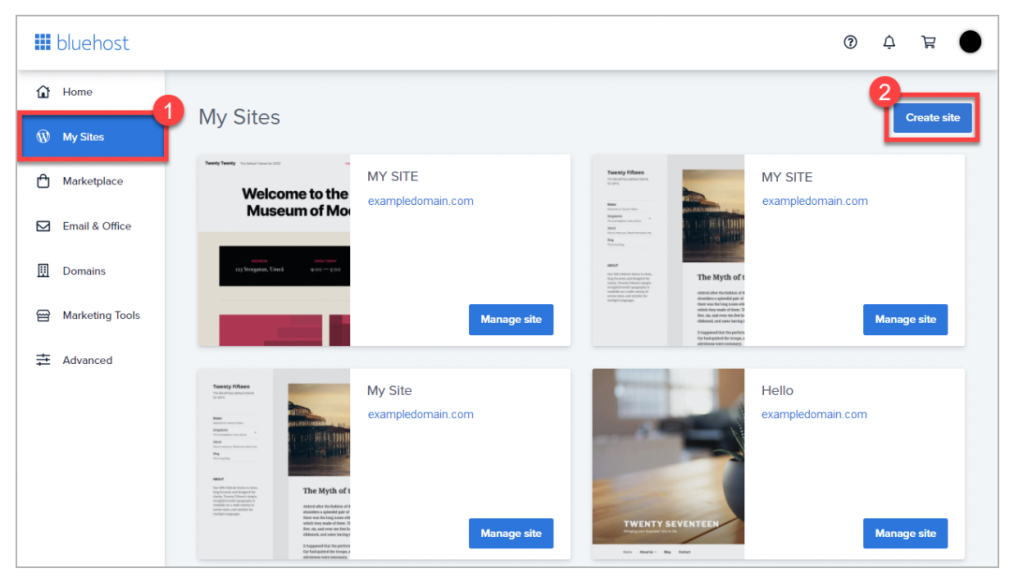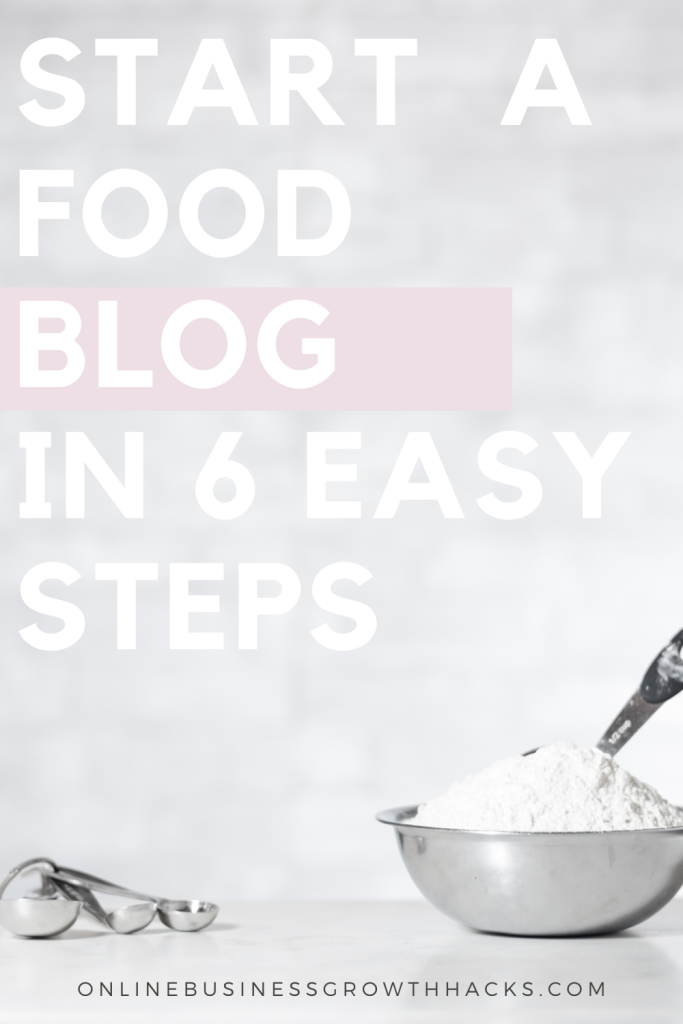I often get asked how to go about starting a blog, and the answer varies depending on the person and on why they want to start one. But, I also often get asked specifically, how to start a food blog. And, well the answer again, is different !
Starting a food blog is an incredible way to share your love of food with your community and audience. It’s a way to share what you love, and a way to reach a whole new niche of people who might enjoy what you have to offer. It’s a creative outlet, and it’s art!
It can also be a way to make a few extra bucks on the back of a hobby or interest.
Regardless of your reason why you want to start writing about food, theres a couple of easy steps you can take to get started super fast. It needn’t be hard to get started! And I’m here to help you realise your blogging dreams in 2023!
Start a food blog in 6 easy steps
- Figure out your niche
- Grab your unique domain name
- Get yourself some reliable self hosting
- Install WordPress
- Choose your WordPress Theme
- Make it your own!
Disclaimer: This post contains links, that if clicked, and you make a purchase, or start a trial, I may make a small commission, at no additional cost to you. I only recommend products I 🧡
1. Figure out your niche
While there are a tonne of food blogs already out there, and some have asked me if its actually worthwhile actually starting a food blog at all because of a saturated market, theres still a whole heap of opportunity left untapped!
The thing is with choosing a niche, is that it’s uniquely yours! And this runs true especially for food blogging.
Gluten free, keto, vegan… theres a bucket load of blogs about all of these topics already… but wait… the one thing that I say to people is this. Figure out your passion, and then share it with the world.
You don’t have to have it all figured out… and, it doesn’t have to be a fancy, or popular cult niche. All it has to be is uniquely yours.
So, while you might be thinking you love to write about meat free meals… and think, ahhh but vegetarianism is so last decade!? … you’re decidedly wrong!
Your version of vegetarian cooking is not last decade.
Your reason why is so very now. Your decision to adopt a lifestyle and a passion for cooking this way has been crafted through a very unique story and a very unique set of circumstances.
It is this that you share. It is this journey and this insight into your life and your passion that will make your blog super interesting. It is this that will bring in a community around your niche, and this that will make your blog a success.
Figure out what your passionate about and why- then share this with the world.
Let’s break that down a bit.
So, you’re into vegetarian cooking. You might love it because you have children who you want to raise a certain way, or because you experienced a health journey of your own. Or, you might be into it because it is simply cheaper than buying and cooking meat regularly.
You take a couple of these things … and combine them!
You make it uniquely yours…
vegetarian cooking + money saving
vegetarian cooking + healthy eating
vegetarian cooking + environmentalism
It’s your unique story and your unique way of putting your passion into the telling of those stories that will make your blog unique.
2. Grab your own unique domain name
So, you’ve figured out what you want to write about, and now comes the fun part! Creating your food blog!
The first thing you want to do is pick a catchy name.
Head on over to Google or Pinterest (Pinterest is BIG on food blogs!) and type in “Food Blogs” or “Food Blogger”. Scan the first few pages of food blogs that are super popular (that rank well)- heres where you’ll get an ideal for the types of names that are proving memorable in this space (and the types of things that are popular right now).
Next, make a list of all the things you love most about your niche idea. Think about where you’re from, what your theme is, some fun words you love to describe your way of cooking or your food, and try out some combinations of ideas you love.
Sometimes its the silliest of ideas that sparks creativity!
Next you want to make sure your blog name is available in terms of the domain name.
Head on over to Bluehost and enter your preferred name into the search bar to see if someone already has it. Bluehost provides super cheap domain names and will even add a domain name to your hosting plan for free if you end up hosting with them. Super good deal.


Now, grab that sucker before someone else does! It’s always a good idea to grab your domain name first – then figure out the rest later on.
3. Choose reliable hosting
So, there’s two ways you can start a food blog.
You can go with a free (or super cheap) blog on a site like Squarespace or Blogger. But, you wont have full control over the blog, and will find it harder to monetise your blog down the track if that’s something you want to do. But if it’s a hobby- then thats perfectly fine.
Or you can create your blog using a self hosted WordPress site.
Now, don’t get confused with wordpress.com vs wordpress.org sites. Same software… just very different things.
If you sign up for a wordpress.com website and blog you’ll, again not have full control over your blog and will find it hard to add things like plugins and ads and other money making activities.
I recommend going the self-hosted route from the get go. Do not worry if you don’t know much about tech or design! It’s easy, I promise!
For this- you’ll need to first up get yourself set up with reliable hosting.
I recommend using Bluehost as they are super cheap, highly reliable and have amazing customer support.

If you lock yourself in for a longer term, the rate is slightly higher but you’ll not have to renew at the regular price. Well worth it.
The basic plan IS ALL YOU’LL NEED to get started! And it will cover you up to 15,000 visits per month. That’s a good start!
4. Install WordPress
I talked a little about WordPress.com vs WordPress.org above. But the TLDR is that Wordpres.com is great for building a website in my opinion – like for a small business for instance. But not so great for building a blog.
WordPress.com will limit your monetisation strategies going forward, and you also have limited options when it comes to customisation and appearance.
WordPress.org on the other hand is a self hosted platform. Well worth the set up investment if you are wanting to create a money making blog. You’ll have full control over the look and feel of your blog and better yet, you’ll be able to monetise as you see fit.
First up- you’ll have to install WordPress. Don’t worry ! Its super easy!
If you’ve gone with Bluehost– its super easy to get WordPress up and running. You wont have to download anything- WordPress will be all loaded onto your site. Just follow the steps below to get started! Super easy!
- Access your Bluehost control panel
- Click on “My Sites” in the left hand sidebar, then “Create Site”

3. Click start building, then enter you sites details
Once you’ve completed the steps above you’ll be able to log in to your site by going to “My Sites”, then Manage Site under your blog, and clicking “Log In to WordPress” top right.
5. Choose your WordPress theme
Now comes the fun part! You’ve done all the hard work so far and now you get to start designing how your blog will look! So good right!
It’s so much fin to design how you want your blog to look and Bluehost makes it super easy for you to install any WordPress Theme with their auto installer. I said it was easy right!
First up. Lets choose a theme.
Keep these things in mind when choosing your food blog theme
- You want your theme to work well for the type of content you post. And in this instance that’s recipes and food related content. So, choose wisely! Food related themes will work best for you as they are specifically designed to optimise your content.
- Choose a theme that’s responsive – this means that it’ll look and function super well on any device screen size. Make sure your theme comes with support. I use the Kale Theme- which is a great food bloggers theme and their support is amazing! I normally get a response within 12 hours on their forum.
- Choose a theme thats regularly updated. It’s tempting to go for a free theme, but often free ones are not well supported. And, after a while you might find it starts to have bugs.
- Choose a theme that supports images! Food blogging is all about showing the fruits of your labour. And great imagery goes a long way to making your food blog great!
- Make sure your new theme is SEO friendly. You want your blog to be easily found and ranked by search engines. A theme that loads fast (page speed is an important search engine ranking factor), and includes title tags will go a long way towards making sure you’re found.
First up- you can search for a great theme on Bluehost’s Marketplace. And if you buy one here, Bluehost in most instances will have it ready and waiting for you- no installation needed! You’ll see the Marketplace tab under Home on your Bluehost dashboard.
Scroll to WordPress themes. Voila! Start searching through their library of Bluehost Certified Themes.
Astra and OceanWP are two of the most popular themes for WordPress Food Bloggers.


Once you have your theme – either via the Bluehost Marketplace or elsewhere follow the easy directions for uploading your theme here.
6. Make it your own!
It’s so exciting to see your vision come to life and now the fun part beings! Your blog is a work in progress and will definitely evolve over time. So know that your first attempt will likely change over time. So don’t get too stressed about having everything perfect in the first week!
Alongside making your blog beautiful, you also want to add a couple of things to make it super easy for people to navigate and share your blog posts.
- Set up a WordPress plugin like WP Recipe Maker or Tasty Recipes– this will take the effort out of making your recipes look seamless on your blog.
- Get yourself a social sharing plugin – I love Grow by Mediavine. Looks great, and doesn’t bloat your website.
- Get Yoast SEO set up to help ensure your content is SEO friendly and will be found on search engines.
- Set up Google Search Console so you can keep track of what keywords you’re ranking for.
- Set up Google Analytics so you can track your sites traffic and where that traffic is coming from
Theres plenty of other great tools and wordpress plugins to help you grow your blog, start with a couple of the most important ones like those above, and then see what else you need.
Write your first blog post!
You’re ready to go! Congrats! Start blogging!
There’s so much to learn and there’s so much to enjoy about blogging. Go easy on yourself. Set yourself a couple of goals and enjoy! But most all all, make it your own! The world needs your unique perspective.



Leave a comment